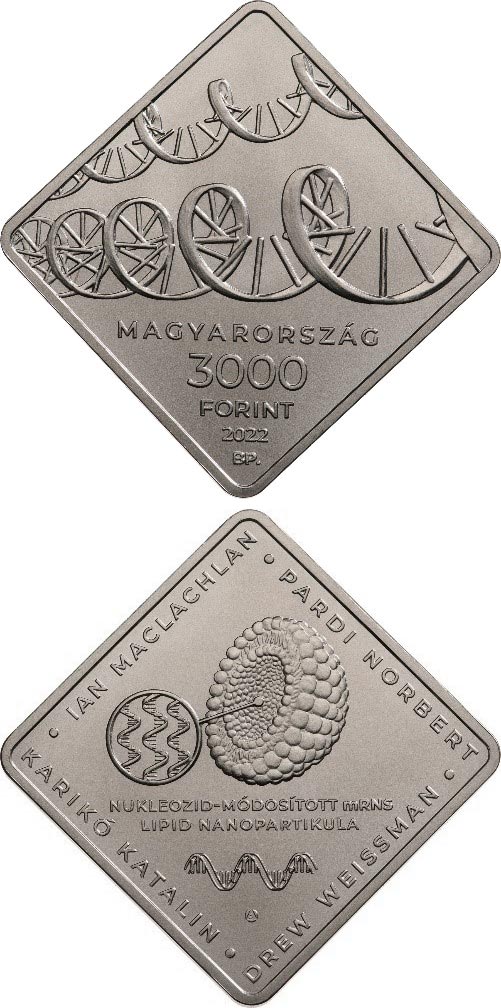3,000 forint - The Hungarian invention providing the basis for mRNA-vaccines

Developed jointly by several researchers, messenger RNA (mRNA) vaccines, aimed to combat COVID-19 infection, played a crucial role in the protection against the SARS-CoV-2 virus and the repression of the global pandemic that broke out in 2020. Two Hungarian scientists outshine the rest, namely Katalin Karikó and Norbert Pardi. As a result of Ms Karikó’s efforts, injecting the mRNA molecule in the human body became safe and by putting the mRNA in fat molecules, Mr Pardi eliminated its instability rendering the injection of mRNA into cells effective.
Based on research of recent decades it became clear that synthetically produced mRNA, encoding viral proteins, injected into the human body, might offer protection against different virus infections. Using the mRNA, the cells produce the necessary section of the virus protein that might cause problems inside the human body, and in response, our immune system starts producing antibodies (and often other special immune cells) enabling the body to fight the virus. The cells in the human body consider the mRNA molecules, encoding viral proteins, as foreign material; however, as a result of the modifications, the mRNA molecules can complete their therapeutic tasks safely and effectively.
This success provides basis to future mRNA vaccine developments for such crucial pathogens as the influenza virus, herpesvirus and the HIV. In addition, several new applications will appear through using mRNA-based medicine for instance treating incurable diseases with gene editing therapy, developing a vaccine against cancer. The development and testing of the two key elements of the vaccine platform (mRNA with modified nucleoside and a carrier lipid nanoparticle) is the result of steadfast research of several decades.
The Magyar Nemzeti Bank is issuing a silver collector coin of 15,000 forints and its non-ferrous metal version of 3,000 forints to honour the results achieved by scientists participating in the research, and their perseverance. The primary function of the coins is to raise awareness, they have no role in coin circulation. The silver and non-ferrous metal coins have the same design, the only difference being the denominations.